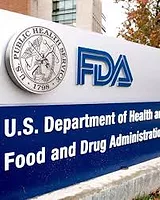Meeting the Challenge of E. coli O157:H7 Control Head On
As Administrator of USDA’s Food Safety and Inspection Service (FSIS), I have a new and broader perspective on E. coli O157:H7 than when I was a District Manager in Dallas. Not only that, but since I first arrived at the Washington, D.C. headquarters, I’ve had the challenge of fighting E. coli O157:H7 during a time when the rates of positive regulatory samples have increased, as has the number of recalls related to this pathogen.
There were several large recalls in 2007 and 2008 due to E. coli O157:H7, and because of this, E. coli has remained a hot topic in the media as well as on Capitol Hill.
Since this strain of E. coli emerged on the scene more than 25 years ago, FSIS has learned much more about the organism and continues to seek out ways to enhance controls and reduce the threat to food safety—but we can only do that by working with our stakeholders to find solutions.
Fighting the Good Fight
FSIS is committed to working hard to fight this pathogen and as an Agency, we’re developing a system that will use data to predict trends and vulnerabilities, and build an integrated inspection infrastructure that takes us to a more proactive rather than reactive approach to food safety.
At FSIS, we know that E. coli O157:H7 is a challenge, and we remain committed to bringing together partners in food safety and public health to collaborate and discuss opportunities for enhancements to the system and prospective solutions to further mitigate risk. In October 2008, we hosted a meeting on sampling methodology and control of E. coli O157:H7. This meeting provided an opportunity to discuss important issues associated with the uniformity and consistency of sampling and testing methods used by the Agency and industry. There was a great exchange of information and suggestions from both industry and consumer groups that will prove to be invaluable as we continue to work with stakeholders and consider future enhancements to the system.
I believe that testing raw beef products for E. coli is only one piece of a larger puzzle to make sure contaminated meat doesn’t make it into grocery stores or homes, which is why the October meeting and many others held recently are so important. Transparency and collaboration are critical to the success of our programs. We strive to move toward a more uniform and consistent approach with industry to strengthen controls and produce a safer product. At the meeting, we also discussed some new testing approaches, such as imported and domestic trim testing and the enhanced laboratory enrichment procedure we’ve been using since January 2008, as well as ground beef-component sampling.
In addition to informing our stakeholders on some of the policy changes that FSIS has made regarding testing, we also wanted to gather input concerning draft guidance documents for industry regarding beef-trim testing and testing claim labels. We also talked about training initiatives and opportunities provided by FSIS and industry related to E. coli. All of those pieces—methodology, training and technology—are technical and complex but come together to complete the puzzle of protecting public health. I want to make sure that we’re doing everything we can, the best way we can, to protect public health through food safety.
Pathogen Control
Before I discuss a few of the other E. coli O157:H7-related activities, I want to explain an important project that we completed last year that provided an updated look at the industry and how we can best control this pathogen. In the fall of 2007, FSIS designed a project to provide a comprehensive review of ground beef-product suppliers and producers as well as current industry practices related to E. coli O157:H7 control in these establishments.
FSIS inspection personnel then completed a checklist in more than 2,000 establishments on a range of issues pertaining to their control measures. We found that 96% of establishments reassessed their HACCP plan and 52% of them made a change to their food safety or HACCP plan, most commonly testing. These data will be essential as we develop additional risk mitigation actions to continue to enhance E. coli O157:H7 controls in the future.
Both the Agency’s and industry’s E. coli O157:H7 initiatives and collective responses have helped drive down the rates of positive samples in 2002, 2003 and 2004 to 0.17%, and those rates remained stable during 2005 and 2006. As the rate of percent-positive samples was higher in 2008 than it was in 2007, we are seeking answers and continually adjusting our system. We are testing more product and source materials that we know often contain this pathogen. We began using the new enrichment broth in early 2008. Again, these are pieces of the puzzle, and as there is not one element that is a sole contributor, it is critical that we continue to take a broad approach to continually improve the system within both government and industry.
In April 2008, we held a two-day public meeting involving all public health partners to discuss challenges and all possible solutions to address recalls and illnesses related to E. coli O157:H7. In addition, we held a follow-up discussion on non-O157:H7 Shiga toxin-producing E. coli (STEC) as well as growing evidence that may support a determination that raw beef products, such as primal cuts and boxed beef contaminated with E. coli O157:H7, are adulterated. We are continuing to work on these important issues. More than 200 people from government, industry, academia and consumer groups attended the meeting. I think the discussions we had were very frank, and I’m hopeful that we can continue to rally all parties around new ideas to combat E. coli O157:H7—just as we have done with so many other food safety issues.
We were eager to continue the discussion and hosted two subsequent meetings in October with public health partners and industry regarding control and sampling procedures for E. coli. But others such as considering E. coli O157:H7 contamination of primals and other whole cuts, still need to be discussed with all of our stakeholders. Other approaches, vaccines and feed additives require additional research and approval from other federal agencies. We know our decisions are most effective when they are science-based and supported by our stakeholders and constituents.
Foodborne Illness
We are also focused on improving coordination during foodborne illness outbreak investigations and response. FSIS, in conjunction with the Food and Drug Administration and the Centers for Disease Control and Prevention, held a public meeting in St. Louis in May 2008. The meeting was part of our follow-up on recalls and foodborne illness outbreak investigations and addressed lessons learned during recent experiences.
Not only did we hold the meeting and talk about issues, but we ran a foodborne illness outbreak-simulation exercise. This exercise pulled together different levels of government, industry and consumer groups to work through a real-life outbreak simulation and see how everyone works together. There were many “Aha!” moments that allowed the participants to walk around in each other’s shoes and learn how other organizations operate in such a situation. We challenged participants to identify one single thing that each of them could do to improve their own process-es. We encouraged them to take that challenge and extend it to their colleagues.
Since then, we have issued a new policy directive that formalized a variety of policies and practices employed by various FSIS program areas when conducting a foodborne illness investigation. This document provides guidance to our workforce as well as additional follow-through and transparency for our public health partners as we work together. Also, we updated our recall directive, taking into account the many lessons learned through large and high-profile recalls conducted over the past two years.
Open Discussion is Needed
We certainly didn’t stop our conversations about pathogen control there. We continued to have open and frank dialogues with our stakeholders and public health partners about new initiatives and solutions to further reduce the prevalence of E. coli. In September, we hosted a public meeting regarding a petition requesting the use of already approved, low-dose irradiation of beef carcasses as a processing aid.
While there’s no silver bullet for E. coli that should solely be relied upon to lower the prevalence of this pathogen on beef, we need to make sure that effective interventions are implemented during all steps along the farm-to-table chain to ensure beef is as safe as it can be, and irradiation is another tool that industry may employ. The most important outcome of the meeting was bringing our stakeholders together to discuss possible solutions to the challenges we face.
We have made it a priority to improve and integrate our data infrastructure. We are also developing the Public Health Information System (PHIS) to support a comprehensive and reliable data-driven inspection system. PHIS will integrate FSIS data, improve its quality, ensure more consistent reporting, detect anomalies and identify and prevent potential public health threats.
FSIS in the Spotlight
As with everything, I think people notice you more when you do something wrong rather than when you do something right. I know that is the case with FSIS.
Now more than ever, consumers notice when there’s a recall or an illness outbreak, but few notice the continual dedication and hard work of every FSIS employee in their respective offices and program areas to ensure that our mission is upheld and that the meat, poultry and processed egg products in this country are safe and wholesome. I know industry has the same story to tell regarding its dedication to food safety.
We are working diligently to utilize resources and data to prevent recalls. We’ve also been working hard to make sure that the upward trend in positive regulatory samples for E. coli O157:H7 does not continue.
There is always work to be done. We do not accept the increase in E. coli O157:H7-positive samples as the new status quo; FSIS is facing this challenge head-on with the latest strategies and science. We’ve been better targeting samples, analyzing data in different and more integrated ways and collaborating with our industry and public health partners.
I am pleased to have had the opportunity to work with a broader public health and food safety network since coming to Washington, and I know that our relationship is only beginning to further our efforts and provide for safer products in the future.
In June 2007, Al Almanza was named Administrator of the Food Safety and Inspection Service. Almanza previously served as the Manager of the Dallas District, which includes more than 350 federally inspected establishments. A Texas native, Almanza joined FSIS in 1978. Prior to becoming the Dallas District Manager, he served in a variety of positions, including Slaughter Inspector, Labor Relations Specialist, Special Assistant to the District Manager and Deputy District Manager.
Looking for quick answers on food safety topics?
Try Ask FSM, our new smart AI search tool.
Ask FSM →






.webp?t=1721343192)

